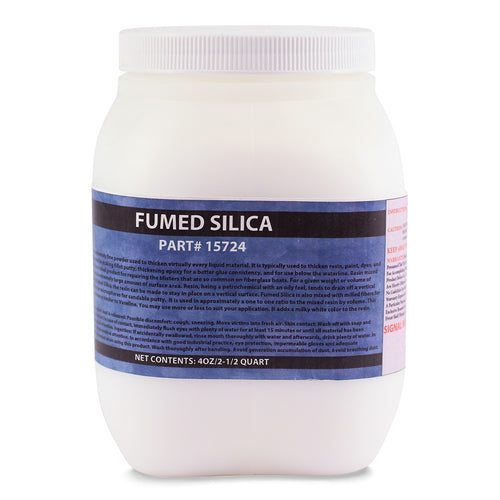You have no items in your shopping cart.

Fillers are often added to resin to make a putty. One filler can be added or several depending on what outcome is desired. Fillers can reduce or increase weight, improve sanding properties, prevent sag on vertical surfaces, fill gaps in fabric weave, improve bonding properties, add strength etc. It is important that the user experiment on a small area before using on a project. Fillers are added after the catalyst when used with resins.
Milled Fibers
Milled fibers come in a variety of lengths such as 1/32", 1/8" and 1/4". They are glass filaments coated with a specific sizing to enhance resin compatibility and milled to a specified bulk density. Unlike chopped strands, which are chopped to a precise strand length, milled fibers are milled to an average bulk density, which is determined by the input glass and process conditions. Milled fiber adds strength and dimensional stability. It also increases impact resistance and surface hardness. Milled fibers can be added to polyester, vinyl ester and epoxy resins.
Glass Bubbles
Glass Bubbles are another filler option. They are hollow glass microspheres. This filler is lightweight and easy to sand. It can be used on minor surface repairs. It makes a good putty for cracks and holes when mixed with polyester and epoxy resins.
Fumed Silica
Fumed Silica (also known by the brand name Cabosil or Aerosil) can be used with polyester resin, epoxy resin and urethanes as a thickening and thixotropic agent. It helps prevent sag or run off on vertical surfaces. May be used in conjunction with other additives such as glass bubbles and/or milled fibers to achieve additional structural properties. It is ideally used as an adhesive or putty. A downside to fumed silica is that it is very hard to sand.
Phenolic microspheres
Phenolic microspheres are purple/brown microscopic spheres. They are easy to sand and great for light weight compounds. Not recommended for making compounds intended for gluing. Great for filling large holes. The plastic microspheres will no crush like glass bubbles, but will flatten out.
Wood Flour
Wood flour is a light-brown, flour-like, wood by-product most commonly used to thicken epoxy resin to a peanut-butter consistency for filleting (radiusing inside corners.) Wood flour makes a thixotropic, coarse structural putty. Easily sandable.
Safety
It is important that safety precautions are heeded when working with fillers. Keep dust from getting in eyes and on skin. Make sure to work in a well-ventilated area and wear proper safety equipment including gloves and respirator.
For more information, visit us at http://fiberglasswarehouse.com










Can I use milled fiberglass in gel coats / both tooling and finish types??
REPLY from fgwarehouse: Yes, it is possible. There is a concern that the fibers, if mixed in too thick, could have air trapped in by it. I would experiment and see what happens. Also, as the gel coat breaks down over time, it would leave the fiberglass exposed.